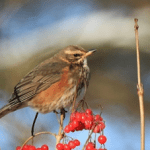Spotted, July 2021
SPOTTED!
Wildlife in (And around) Hailsham
by Tim Fox
As I write, it’s 20 days into #30DaysWild. I have to admit not being able to keep up with daily postings on Twitter, but I’ve still found plenty of #RandomActsOfWildness to keep me busy. Of those to-date, “Following a bee” was made easy thanks to Hailsham Parish Church (St Mary’s). As well as allowing part of the graveyard to go wild, in which there are many species of wildflower attracting bucket loads of insects, the main attraction on the sunny Sunday June afternoon that I visited it was a bridal wreath. Before you start thinking about the leftovers from a ceremony the previous day, bridal wreath is a synonym for a variety of shrub, spiraea arguta, with intensely white blooms the full height of the plant. Planted next to the current main entrance to the church, it was in full bloom and, whilst walking by, it was difficult to avoid the sound made by hundreds of pollinating insects, each one eagerly seeking out nectar from what must have been hundreds of thousands of delicate white five-petalled flowers. Honeybees, bumblebees, hoverflies and flies abounded and, if I stayed a while longer, I’m sure that I would have been able to add butterflies and moths to the visitor list. We have a Hailsham Heritage Trail that records buildings and areas important to Hailsham’s history (St Mary’s Church is number 3 on the trail); if we had a trail to record natural history (the Hailsham Nature Trail?), this spiraea would be on it. For more information about 30 Days Wild, visit www.wildlifetrusts.org
Photo credits: Tim Fox
Tim can be found most Saturday mornings gracing the airwaves with Pat Bradley on 95.9 Hailsham FM, discussing local happenings between 8 and 10am.



